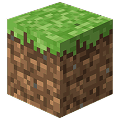Minecraft Furnace Time & Fuel Optimizer (Real Burn Times)

Disclaimer: The Minecraft Furnace Time & Fuel Optimizer is not an official tool by Minecraft – it is created by fans to help Minecraft players & creators. We hope you like it and we do our best to update it regularly.
Minecraft Furnace Fuel Comparison (Best to Worst)
| 🔥 Fuel | ⏳ Burn Time (s) | ⚒ Items per Unit | 📌 Notes |
|---|---|---|---|
| Lava Bucket 🪣🔥 | 1000s | 100 | Best fuel, bucket returns |
| Coal Block 🧱 | 800s | 80 | Efficient bulk smelting |
| Blaze Rod 🔥 | 120s | 12 | Strong, but Nether-only |
| Coal 🪨 | 80s | 8 | Reliable, common |
| Charcoal 🌲 | 80s | 8 | Renewable alternative |
| Dried Kelp Block 🟩 | 200s | 20 | Best farmable bulk fuel |
| Boat 🚤 | 60s | 6 | Decent, but resource-heavy |
| Wood Log 🌳 | 15s | 1.5 | Better used as planks |
| Wood Planks 🪵 | 15s | 1.5 | Basic early-game fuel |
| Wooden Tools 🪓 | 10s | 1 | Recycle old tools |
| Sign 🪧 | 10s | 1 | Weak, decorative |
| Ladder 🪜 | 15s | 1.5 | Craftable, not efficient |
| Bow 🏹 | 15s | 1.5 | Recycle mob drops |
| Fishing Rod 🎣 | 15s | 1.5 | Weak, but usable |
| Crossbow 🎯 | 15s | 1.5 | Niche fuel, rare |
| Dried Kelp 🌿 | 4s | 0.4 | Use in block form only |
| Sapling 🌱 | 5s | 0.5 | Better replanted |
| Stick 🥢 | 5s | 0.5 | Weak, crafting priority |
| Scaffolding 🪜 | 2s | 0.2 | Very weak, avoid |
| Bamboo 🎍 | 2.5s | 0.25 | Farmable, weak |
Smelting fuel strategies that actually save time
1) Best fuels by use-case
Different fuels shine in different scenarios. For long runs choose Lava Buckets, for flexible bulk use Coal Blocks, and for automated loops go with Dried Kelp Blocks. Sticks or Bamboo are only backup options.
| Scenario | Recommended fuel | Items per unit | Notes |
|---|---|---|---|
| Early game | Charcoal | 8 | Fast to craft from wood; reliable starter |
| Long smelting sessions | Lava Bucket | 100 | Top power; bucket returns after use |
| Balanced everyday use | Coal Block | 80 | Great stack efficiency; minimal refills |
| Farms & automation | Dried Kelp Block | 20 | Renewable; perfect for hopper systems |
| Emergency backup | Sticks | 0.5 | Use only when nothing else is available |

Quick win: lock a tiny token set
Pick one primary fuel for each scenario (Lava, Coal Block, Kelp Block). Plan your smelter layout once and reuse it for all resources to avoid constant re-tuning.
2) Renewable vs non-renewable fuels
Renewables scale forever but are weaker per unit. Non-renewables burn longer per piece but depend on mining or travel. Use the matrix below to decide what fits your world progression.
| Fuel | Renewable | Items per unit | Farming setup |
|---|---|---|---|
| Dried Kelp Block | ✅ | 20 | Kelp farm → smelt → craft block → feed back |
| Bamboo | ✅ | 0.25 | Fast growth; only viable as farm by-product |
| Charcoal | ✅ | 8 | Tree farm → smelt logs into charcoal |
| Coal | ❌ | 8 | Mine veins; good mid-game stock fuel |
| Lava Bucket | ❌ | 100 | Collect from lakes or Nether; top single-unit power |

Don’t underpower bulk smelters
Running big arrays on Bamboo or Sticks causes constant refills and wasted hoppers. Reserve weak fuels for emergencies or tiny batches only.
3) Automation tips that scale
Build an AFK smelter with double furnaces, hopper input for items, and a dedicated fuel line. Dried Kelp Blocks enable a closed loop; Lava Buckets are best for one-off mega batches when you can refill buckets easily.
Tool recommendation: Minecoin to Euro Calculator
Stats to explore: Minecraft players by country

